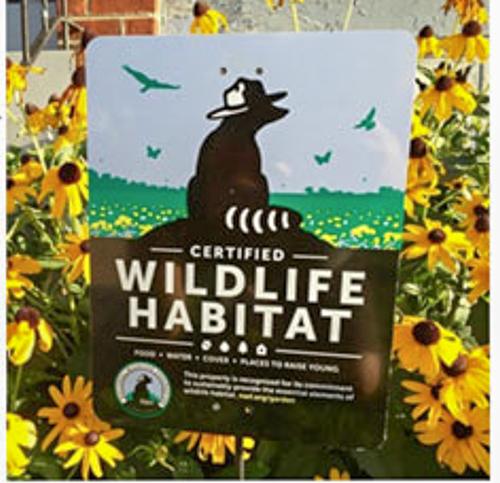Your Yard or Balcony as a Habitat for Wildlife
By Cindy WestleyRapid and large-scale changes to our lands and waters mean wildlife are losing the habitats they once knew. Habitat consists of the use of food, water, shelter, and space to help meet the needs of wildlife. Every habitat is a step toward replenishing resources for wildlife both locally and along migratory corridors. Habitats can be created in any outdoors space from a balcony to a multi-acre tract of land. A wildlife garden serves as a sustainable haven for native and local plants, birds, amphibians, reptiles, insects, mammals, etc. Establishing an area that is similar to intact wild areas will allow natural systems to interact. Wildlife gardens can also play an essential role in biological pest control, promote biodiversity, and generally benefit the wider environment.
The Audubon Society provides details about creating a healthy wildlife habitat with ideas for native plants to consider, how to attract songbirds, natural pest control, and use of container plants in small spaces. Visit: https://www.audubonva.org/creating-wildlife-habitat
Certified Wildlife Habitat
The National Wildlife Federation offers a certification. You may be interested in formal certification or just consider how you might add one or of the following elements to your outdoor space: provide food, water, cover, a place to raise young, and maintain. These have a positive effect on the health of the soil, air, water, and habitat for native wildlife. Native plants, shrubs, and trees are necessary to provide food. Water can be supplied by natural features such as a streams, ponds, or wetlands, or by human-made features such as bird baths. Native vegetation can also provide cover and places for wildlife to raise their young, as can brush piles or dead trees. With all of these features in place, it is crucial that the land be cared for thoughtfully and as naturally as possible. Avoid the use of chemical pesticides and fertilizers, reduce the area that turf grass occupies, use mulch obtained from sustainable forestry practices, and minimize water use in order to maintain the integrity of the soil, air, and water in and outside of the habitat.
